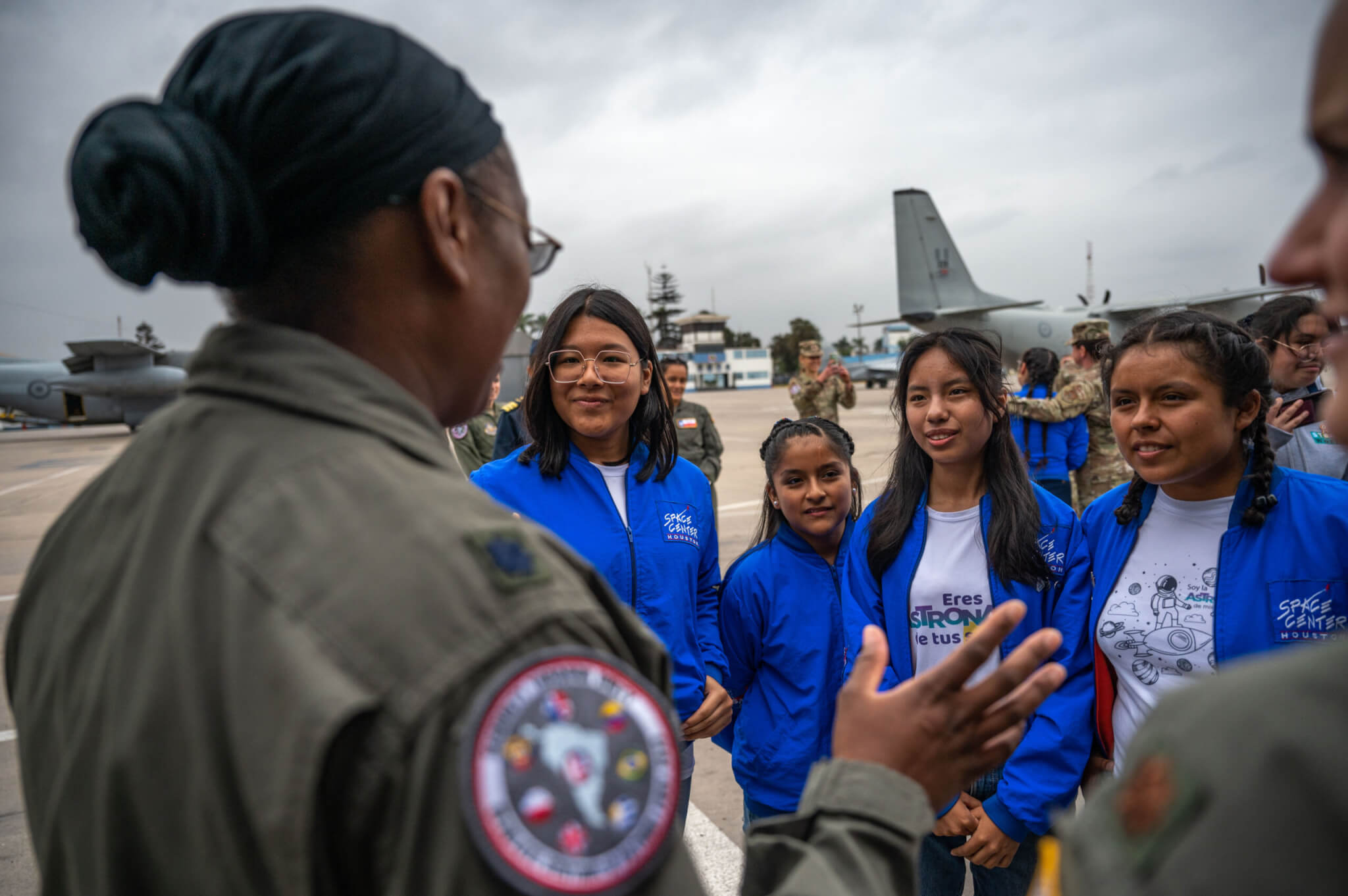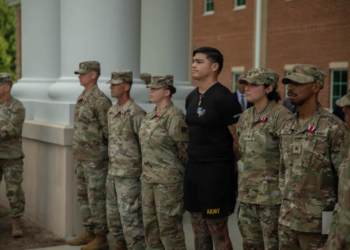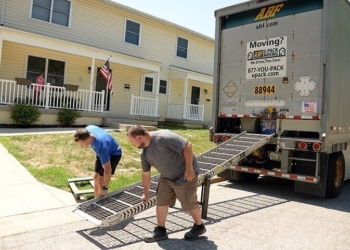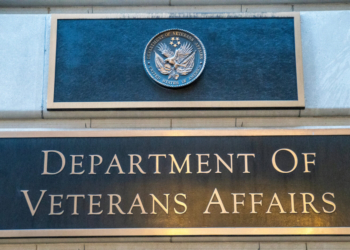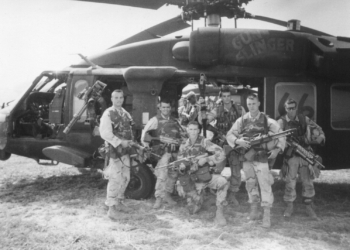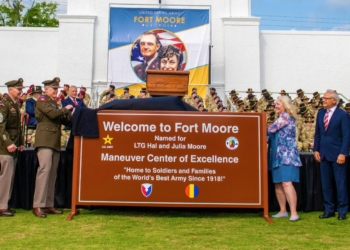A group of girls from underserved areas of South America recently came face-to-face with female pilots, doctors and nurses during an annual exercise in Peru.
U.S. Air Force personnel and members of the Peruvian military participating in Resolute Sentinel 23 this summer welcomed the girls, who were visiting as part of their involvement in She Is Astronauta, a subsection of the Colombia-based She Is Foundation.
Liz Quispe Santos, a director with the She Is Foundation, said the international organization represents countries including Costa Rica, Dominican Republic, Panama, Colombia, United States and Peru. She Is Astronauta was established in partnership with NASA and the U.S. Department of State, according to the U.S. Embassy in Peru, to provide STEM programming for girls aged 11 to 16 from “vulnerable and underserved communities.”
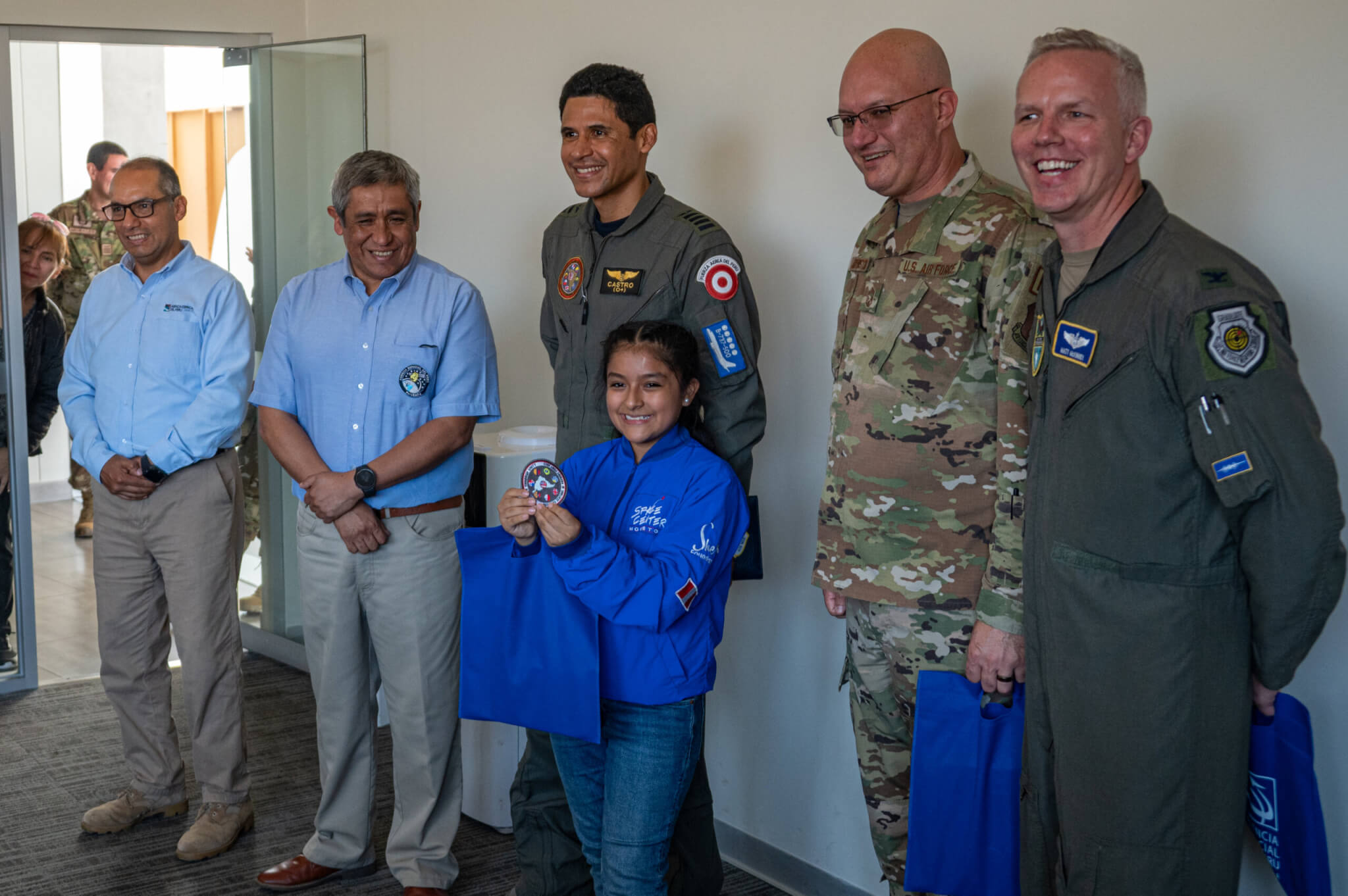
One of USSOUTHCOM’s top priorities, according to the embassy, is strengthening partnerships in Latin America.
“Promoting the goals of women, peace and security is an important way in which we achieve that mission,” the embassy said in a statement.
Maj. Mackenzie Shribbs, a medical doctor at Travis Air Force Base, was among the U.S. participants in Resolute Sentinel and said she was surprised the She Is Astronauta events were a priority for Resolute Sentinel.
“There were three other subgoals, and one of them was purely dedicated to increasing the presence of women in the military,” Shribbs said. “The military tends to love their STEM. So you mix the two and She is Astronauta combines that idea of building more women in STEM jobs.”
Shribbs and other female personnel were among the service members who spoke to the girls. Through a translator, they shared information about how the Critical Care Air Transport Team operates and showed the girls what it’s like to carry a patient into the aircraft.
“The language barrier was real because I don’t speak a ton of Spanish,” Shribbs said, “but they were very enthusiastic about the planes themselves.”
Plus, the girls were already knowledgeable about the military, according to Shribbs.
“They knew some of the medical military terms that we were using, like rotary wing, in Spanish of course, so I was very impressed by that,” she said. “And they all seemed very enthusiastic about being there. And I think that they were very excited to be around all those strong, female figures.”
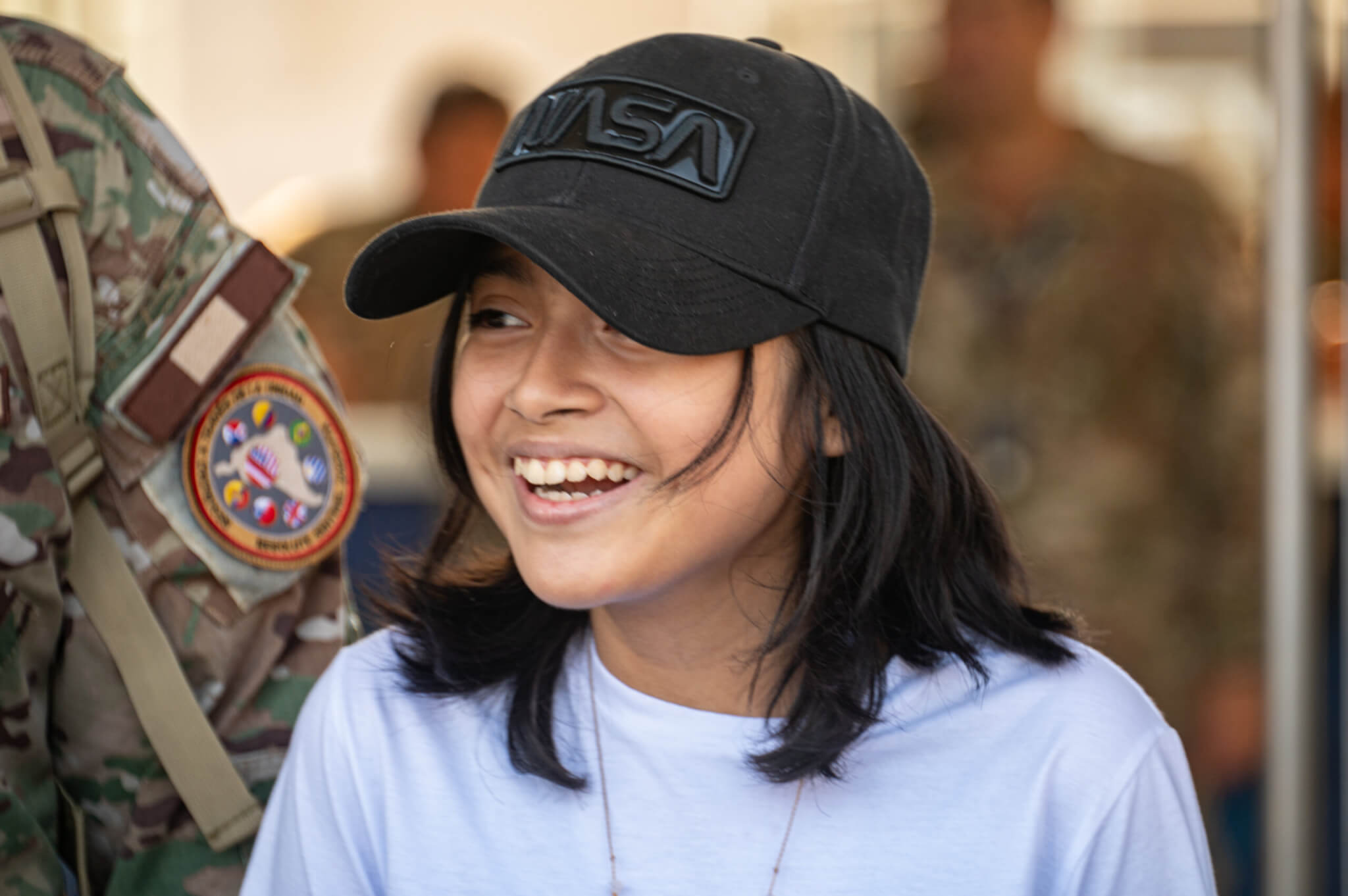
Patty Perez, a member of the public affairs section at the U.S. embassy in Lima, Peru, helped make the opportunity come to fruition along with Maj. Danielle Snider, of the U.S. Air Force Reserve.
“We saw a lot of potential in these girls,” Perez said. “So when the air force presented the opportunity of their activities, and having met the She Is Astronauta participants, they are so interested in science and in space, we thought this would be a great match.”
Perez said there were two visits associated with Resolute Sentinel. One was to Centro Nacional de Operaciones de Imagenes Satelitales (CNOIS), the Peruvian equivalent to NASA, where the girls saw firsthand satellite imagery captured by Peru’s premier PeruSat-1 satellite.
The other to visit was to “Grupo Ocho”, a Peruvian air force base in Lima, where girls saw aircrafts that the U.S. Air Force brought to the country for the exercise and interacted with female military members.
“When there [were] conversations about approaching young students, and we thought girls could be best because these are nontraditional careers and there is a gender gap within the Peruvian air force,” said Perez, who served as a pilot officer in Peru.
Air Force Lt. Col. Mikol Kirschenbaum, public affairs officer for CJTF Resolute Sentinel 2023, said the second event was part of Resolute Sentinel’s Distinguished Visitors Day, which included the U.S. ambassador, Peru’s president of Congress and Peru’s DOD-equivalent generals and directors.
Everybody’s faces “lit up” during the visit, according to Kirschenbaum, who noted the more tangible nature of the aircrafts.
“We were at the space facility couple weeks prior. Space is kind of hard to wrap your head around,” Kirschenbaum said. “We saw a model of a satellite, now imagine this 7 miles in the air, rotating around the earth. Where the airplanes, they could be on the airplanes, they could sit in the pilot seat and touch the controls of the aircraft, they can smack on the wall and it was more tangible, more interactive.”
Cross-cultural events like this help increase opportunities for girls in Peru, according to Perez.
“Statistics say that only 30% of women are scientists in Peru,” Perez said. “So there is a lot of work we need to do.”
While Shribbs said the U.S. has “a lot farther to go” as it relates to gender equality, the number of women in STEM in Peru is lower than the states.
“And a lot of that effort was because we started a lot of these similar programs [to She Is Astronauta] decades ago, and I think Peru is starting to use programs right now and this is one of that example of having them,” she said.


